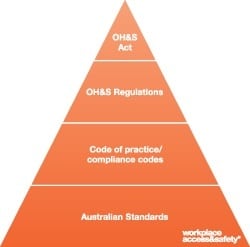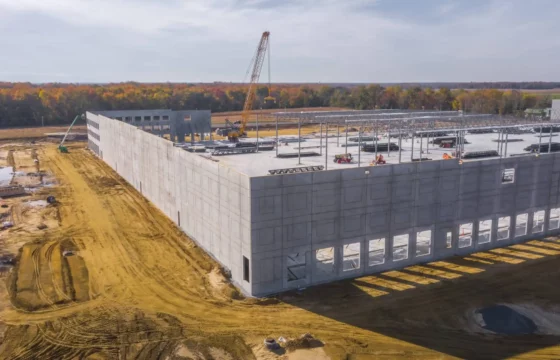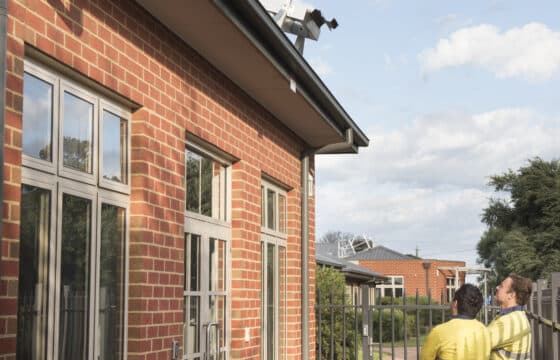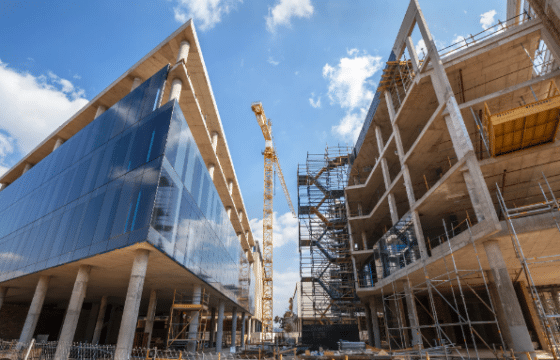How often must I inspect my anchors and static lines?
Anchor points and static lines for working at heights need to be inspected at regular intervals. Although the frequency of inspection is addressed by state legislation, it can be confusing. There are differences from state to state and the legislation sometimes seems contradictory.
The health and safety legislation in each state will be superseded by a national model Work Health and Safety Act, national regulations and national codes of practice but, until it does, facility managers must still comply with local legislation.
This article explains what you need to do on a state-by-state basis and explains where to find the answers to managing this most hazardous of tasks.
How is the legislation structured?
Priority is given to legislation as follows:
Each state’s OHS Act is the primary legislation and mandates compliance with health and safety regulations, which deal with specific risks, such as asbestos management, confined spaces, plant and height safety.
The detail and content vary from state to state but, essentially, regulations are legal documents and can be quite difficult for anyone outside the legal system to interpret. Codes of Practice and Compliance Codes give practical advice regarding specific risks. Workplace safety authorities regard compliance with the codes of practice as complying with OHS laws.
Compliance with Australian Standards is a useful defence in a prosecution but they aren’t necessarily legally binding unless called up in higher order legislation as applied, incorporated or adopted. Under these circumstances, compliance with that standard becomes mandatory and the standards effectively form part of the legislation.

Victoria
Victoria was the first state to introduce a separate set of regulations for the Prevention of Falls in 2003. The current regulations don’t specify the frequency of inspections but the Compliance Code does.
Inspection is required within six-monthly intervals when the anchorages are permanently fixed and in “regular use”. The compliance code doesn’t define “regular use”, so it is up to the facility manager to determine whether the anchorage points are “regularly used”. The compliance code makes 32 references to anchorages, which reflects their perceived importance to height safety compliance.
NSW
The NSW Regulations deal with working at heights in Division 6 of the 2001 Regulations. The 2001 Regulations calls for inspection “on a regular basis”. The more recently published position paper and 2006 Safe Working at Heights Guide confirms that requirement in relation to inspection and testing.
SA
The South Australian regulations mandate inspections of anchorages that are permanently fixed at least every six months. The Australian Standard dealing with fall prevention equipment, AS/NZS1891, is also adopted as a code of practice in South Australia.
Since the regulations are higher-order legislation than a code of practice, the requirement for six-monthly inspections takes precedence over the 12-monthly inspections required under AS/NZS1891.
Queensland
Section 306I 10(c) of Queensland’s Workplace Health and Safety Regulations states that every component of a system must be inspected six–monthly, “other than” the anchorage points. This creates a lot of confusion for users. When read literally, it implies that all the components of a system should be inspected, such as the ropes, in line shock absorbers, end terminals and shuttles, except for the anchorage point, which need never be inspected.
Surely the most fundamental part of a system that is designed to stop a person hitting the ground would be the anchorages, which hold the system to the main structure. Despite this contradiction in the regulations, a more logical approach is to interpret the regulations to mean that the full system must be inspected six-monthly, not just the anchorage points. The importance of anchorages cannot be overstated: they hold the system together and the regulations deal with them in 25 different paragraphs!
Fortunately, Section 306G (4) clearly and unambiguously states that a system must be inspected six-monthly and that records are to be maintained for at least four years. The regulations make continual reference to anchorages being a part of the system, which brings closure to this contradiction.
WA
Western Australia’s regulations call for six-monthly inspections of all fixed anchorages. There is no reference in these regulations to any Australian Standards.
Australian Capital Territory
The National Code of Practice for the Prevention of Falls in General Construction is notified as a Code of Practice in the ACT, meaning that there is a requirement for six-monthly inspections of permanently fixed anchorages.
National code of practice
The national Code of Practice for the Prevention of Falls is a mirror image of the Victorian regulations and also calls for six-monthly inspections of permanently fixed anchorages. This is regarded as guidance material only, unless it is adopted as a Code of Practice, as is the case in ACT. Australian Standards two Australian Standards are generally referenced when it comes to height safety: the AS/NZS 1891 series of standards deals with industrial fall arrest systems and devices, while AS/NZS 4488 deals with industrial rope access systems.
Until updated in 2009, the the AS/NZS 1891 standard included references to total restraint systems. When total restraint is maintained, a person is restrained from falling at all and the load requirements for the anchors are significantly less. When the standards were updated, reference to restraint was totally eliminated because the likelihood of misuse of a restraint system is so high that a person can easily get it wrong and fall. In the new standard, this was changed to a “technique” of restraint, with the full requirements for fall arrest. Any reference to total restraint was removed from the standard, with the exception of an appendix warning of the risks.
The inspection requirements for anchorages and vertical and horizontal static lines are generally left to manufacturers. The standard states inspection frequencies are not to exceed five times a year, defaulting to 12-monthly inspections in the absence of manufacturer’s recommendations.
AS/NZS4488 simply calls for 12-monthly inspections, irrespective of the surrounding conditions or the manufacturer’s recommendations.
Model Work Health and Safety Regulations
The draft model regulations stipulate that all anchorages should be tested and inspected before use but do not specify a frequency. We hope that with sufficient public comment, the final model will offer facility managers more guidance.
Under the draft model regulations, control measures must be reviewed, including a planned program of inspection and maintenance for the control measures, and a system of monitoring the inspection regime to verify it is appropriate. The draft model regulations steer users toward consultation with equipment manufacturers to ensure requirements are met.
What can go wrong?
If anchors and static lines aren’t routinely inspected and maintained, they can fail. Fixings can loosen and rope fittings can dislodge. Site conditions change, too. New air-conditioners may be installed, for example, or gutters may become inaccessible from the ground. Dangling from the side of a building in a harness can lead to tragedy when toxic shock/suspension trauma kicks in. If the equipment fails or is incorrectly configured, there is also a chance of hitting the ground, fully dressed in your harness.
Every year, Worksafe Victoria publishes a summary of prosecutions brought by the Victorian Workcover authority. It’s a brief summary of every prosecution by Worksafe during the calendar year, and is published for anyone to read who has an interest in workplace safety. The most recently published summary is from 2006. During this period there were 23% of the health and safety prosecutions which related to falls. Each one resulted in a conviction and/ or a penalty.
Apart from the risk of injury, penalties have been significantly increased under the model legislation for category one, which levies penalties of $3 million on corporations, $600,000 for officers and $300,000 for workers. Workers and officers may also be liable for jail terms of up to five years.
What’s involved in an inspection and where to now?
An inspection involves establishing whether anchorage points and safety lines can perform as intended. Because the loads are significant (around 2 tonnes per anchorage point), this involves assessing the structure, fixing of the anchor and condition of the equipment. Load tests are conducted for certain types of anchorages and cables are re-tensioned on safety lines.
The design and configuration of the system determines whether it is suitable for a fall arrest or restraint technique and the system needs to be reassessed when equipment is modified or installed to ensure the anchors are in the correct locations.
Every anchor point should be tagged and date stamped, like fire equipment, and compliance plates updated to prove currency.
Consultation is essential to ensure equipment is positioned to suit tasks and that workers have the appropriate competency training, experience and equipment to work safely.
Rescue plans must be carefully considered, since self-rescue is not an option and suspension trauma is a real hazard.
The administration of the system is important and reputable height safety companies provide an updated equipment register, a detailed condition report of your assets, compliance tags on every anchorage point and updated compliance plates.
If a statement of compliance without any other supporting documentation is all you receive after an inspection, interview your provider to establish that their methodology is thorough and captures all of the aspects of an inspection.
The bottom line: the legislation and industry practice
The question is simple: when should I have my anchor points inspected? In most states, the law points to six-monthly inspections but the answer in your circumstances might not be quite so straightforward.
Some facility managers opt for annual inspections on the basis of other advice or their own interpretation of the requirements. If this is the case, it’s very important to first conduct and document a thorough risk assessment to ensure that annual inspections can be justified and supported.
| State | Frequency of Inspection | Legislation |
| ACT | 6 monthly | National Code of Practice |
| New South Wales | “on a regular basis” | Regulations |
| Northern Territory | 6 monthly | Regulations |
| Queensland | 6 monthly | Regulations |
| South Australia | 6 monthly | Regulations |
| Victoria | 6 monthly | Compliance Code |
| Western Australia | 6 monthly | Regulations |


